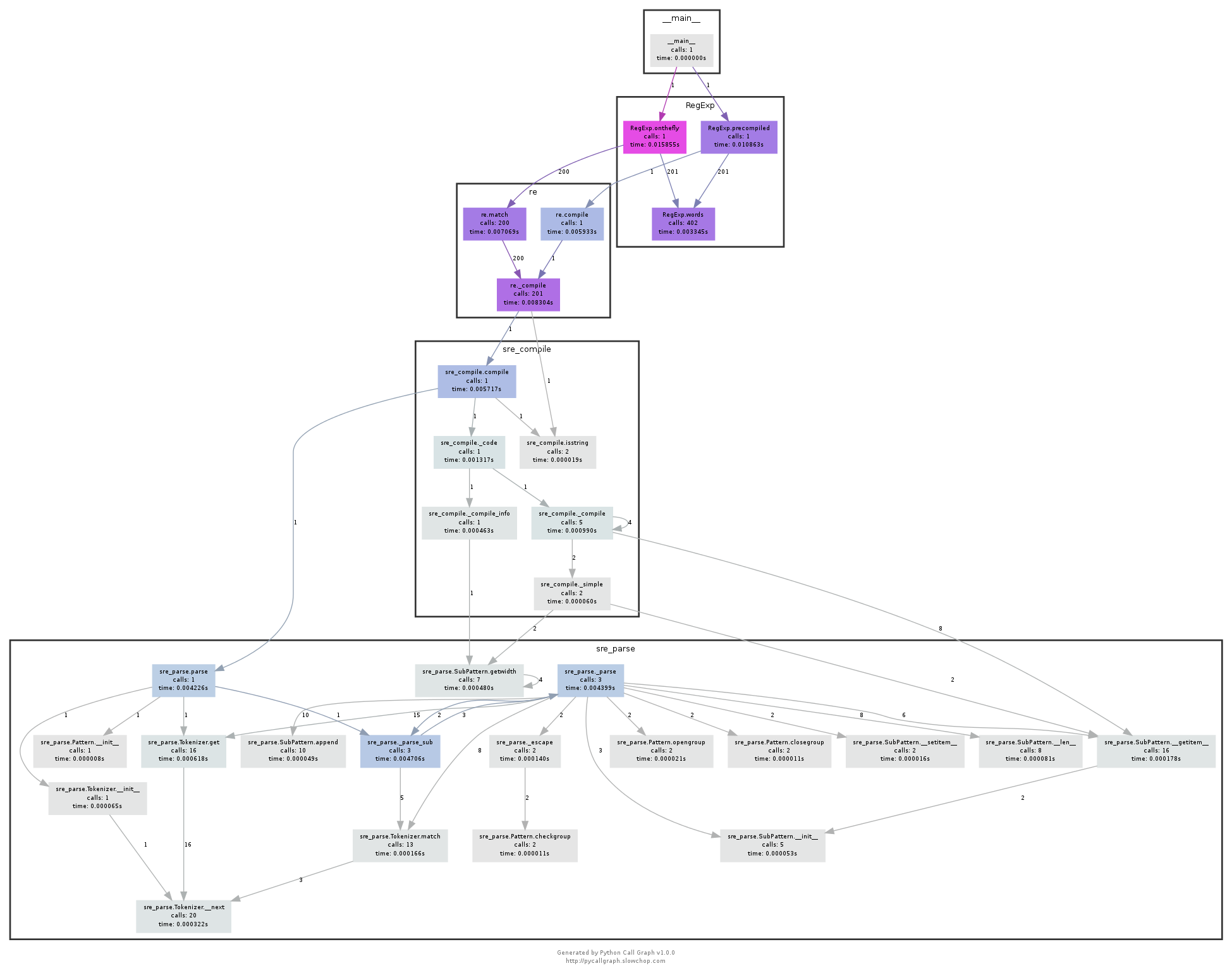Regular Expressions (Grouped)¶
See how a regular expression is constructed and matched. The example also shows the comparison between creating a regular expression object before matching, versus matching a “new” regular expression every iteration. See also Regular Expressions (Ungrouped).
Source Code¶
#!/usr/bin/env python
'''
Runs a regular expression over the first few hundred words in a dictionary to
find if any words start and end with the same letter, and having two of the
same letters in a row.
'''
import argparse
import re
from pycallgraph import PyCallGraph
from pycallgraph import Config
from pycallgraph.output import GraphvizOutput
class RegExp(object):
def main(self):
parser = argparse.ArgumentParser()
parser.add_argument('--grouped', action='store_true')
conf = parser.parse_args()
if conf.grouped:
self.run('regexp_grouped.png', Config(groups=True))
else:
self.run('regexp_ungrouped.png', Config(groups=False))
def run(self, output, config):
graphviz = GraphvizOutput()
graphviz.output_file = output
self.expression = r'^([^s]).*(.)\2.*\1$'
with PyCallGraph(config=config, output=graphviz):
self.precompiled()
self.onthefly()
def words(self):
a = 200
for word in open('/usr/share/dict/words'):
yield word.strip()
a -= 1
if not a:
return
def precompiled(self):
reo = re.compile(self.expression)
for word in self.words():
reo.match(word)
def onthefly(self):
for word in self.words():
re.match(self.expression, word)
if __name__ == '__main__':
RegExp().main()
Generated Image¶
Below is the generated image from the code above. If you’re having issues with the image below, try the direct link to image.
